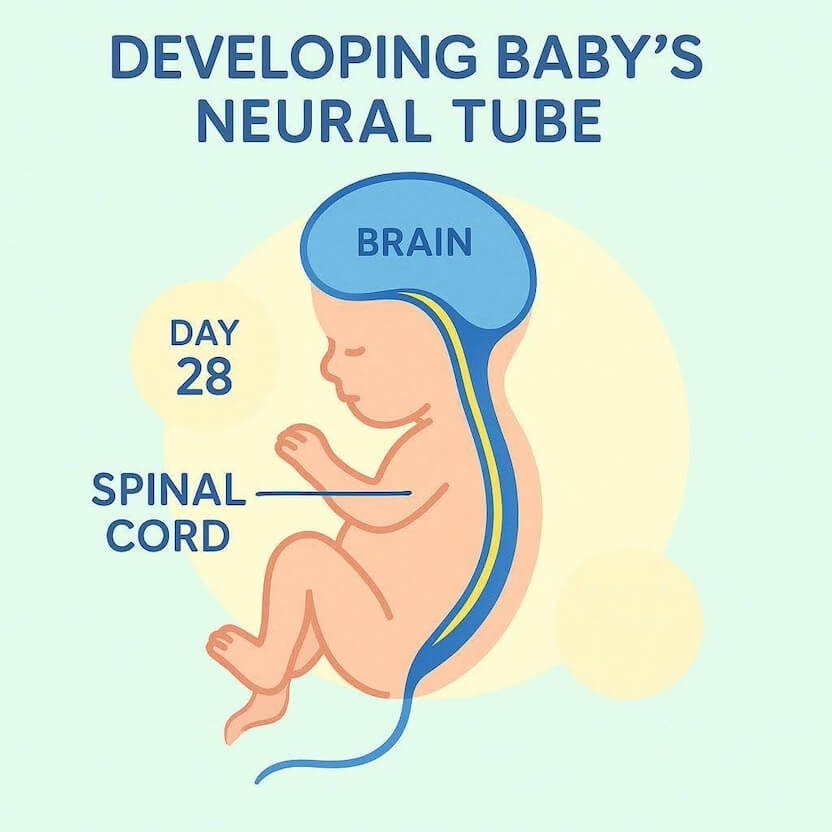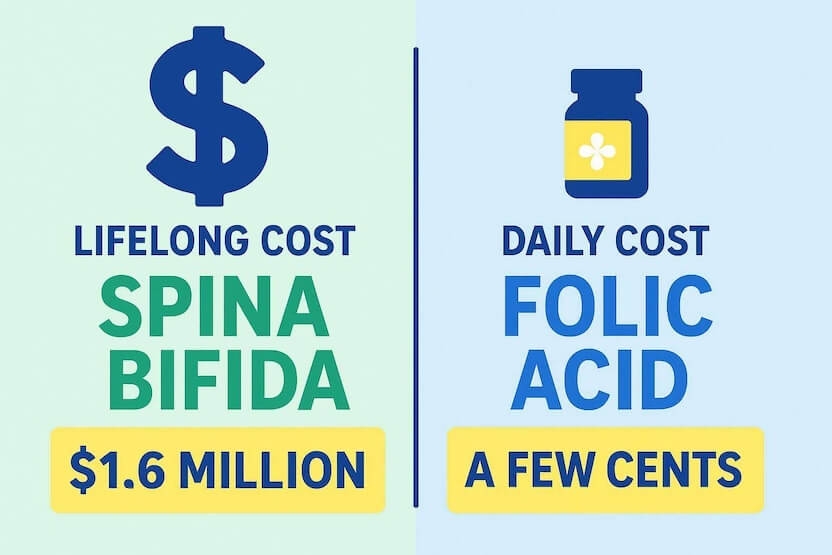Last update: July 30, 2025
3 minute read
The Importance of Folic Acid in Decreasing Neural Tube Defects: A Vital Nutritional Insight
Learn how folic acid supplementation can reduce neural tube defects by up to 70% and discover the optimal timing, dosage, and sources of this crucial nutrient for women of childbearing age.

By Derick Rodriguez, Associate Editor
Edited by Dr. Dimitar Marinov, MD, RDN, PhD

Did you know neural tube defects affect around 3,000 pregnancies every year in the U.S., often before women even realize they're expecting? The first four weeks of pregnancy—those crucial early days—are when the baby's brain and spinal cord are formed, making timely intervention essential.
Thankfully, research shows folic acid supplementation can reduce the risk of these defects by more than 70%, making it an absolute must for women of childbearing age.
Curious about the specifics and how prenatal vitamins can help? Check out this comprehensive prenatal vitamin guide to ensure you're informed, prepared, and proactive in safeguarding your baby's health from day one.
Key takeaways
- Taking 400 mcg of folic acid daily reduces neural tube defects by over 70%
- Neural tube defects develop within the first month, often before pregnancy awareness
- Both diet and supplements are important; pre-pregnancy supplementation is crucial
The critical role of folic acid in preventing neural tube defects
The neural tube forms the foundation of a baby's nervous system, developing into the brain and spinal cord within the first 28 days after conception.
This critical period often happens before many women know they're pregnant, making preventive measures essential.
Many pregnancies are affected yearly
According to the CDC, neural tube defects affect about 3,000 pregnancies each year in the United States.

Recommended daily intake and sources
The standard recommendation is 400 mcg daily for most women of childbearing age, while those with high-risk factors may need up to 4,000 mcg daily under medical supervision.
— Dr. Dimitar Marinov, MD, RDN, PhDDaily intake of 400 µg folic acid before conception and during early pregnancy supports the rapid cell division and DNA methylation crucial for neural tube closure, making it an indispensable, low‑cost strategy to markedly lower the risk of birth defects like spina bifida and anencephaly.
Good dietary sources include dark leafy greens, fortified cereals, legumes, and citrus fruits. However, getting adequate levels through diet alone can be challenging, making supplementation crucial for most women.

VitaRx Tip
All women capable of becoming pregnant are advised to take 400 micrograms (mcg) of folic acid each day, as recommended for the prevention of neural tube defects.
Common types of neural tube defects
According to Cleveland Clinic, the main types include:
Type of NTD | Description |
|---|---|
Spina bifida | Most common type, characterized by incomplete neural tube closure |
Anencephaly | Fetus's neural tube doesn't close at the top |
Encephalocele | Opening in the skull causing the brain to protrude |
Anencephaly is serious
Anencephaly is considered incompatible with life.
Risk factors and prevention
Risk factors needing special attention include previous NTD-affected pregnancies, family history of NTDs, certain medications, and conditions affecting nutrient absorption.
Some medications are risky
Certain medications, like antiseizure drugs, have been identified as risk factors for neural tube defects.
Economic impact
The estimated lifetime cost of caring for someone with spina bifida approaches $1,600,000, while prevention through folic acid supplementation costs less than a dollar per day.

Frequently asked questions (FAQ)
Here are some of the most frequently asked questions about folic acid.
Final thoughts
In short, folic acid isn’t just a helpful supplement—it's a critical key to preventing life-altering neural tube defects like spina bifida and anencephaly.
Given that many pregnancies are unplanned, consistently taking 400 mcg daily is one of the easiest yet most powerful steps you can take toward a healthier pregnancy.
Knowing how significantly simple preventive actions can impact an entire lifetime, isn’t it worth investing in your and your baby’s future starting today?
Sources and references
Editor

Derick Rodriguez
Derick Rodriguez focuses on editing health and wellness-related content. With over half a decade of experience in the digital realm, Derick has developed a unique skill set that bridges the gap between complex health concepts and accessible, user-friendly communication. His approach is deeply rooted in leveraging personal experiences and insights to illuminate the nuances of health and wellness topics, making them more approachable and empowering readers with knowledge and confidence.
Fact checker

Dr. Dimitar Marinov
Dr. Marinov has years of experience in scientific research and preventive and clinical medicine. His publications in peer-reviewed journals are on nutritional status, physical activity, and musculoskeletal disorders among adolescents.
At VitaRx, we're not just passionate about our work — we take immense pride in it. Our dedicated team of writers diligently follows strict editorial standards, ensuring that every piece of content we publish is accurate, current, and highly valuable. We don't just strive for quality; we aim for excellence.
Related posts
While you're at it, here are some other relevant articles you might be interested in.

Get your personalized vitamin recommendations in less than
5 minutes.
Get your personalized vitamin recommendations in less than
5 minutes.






